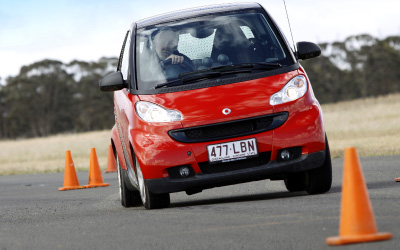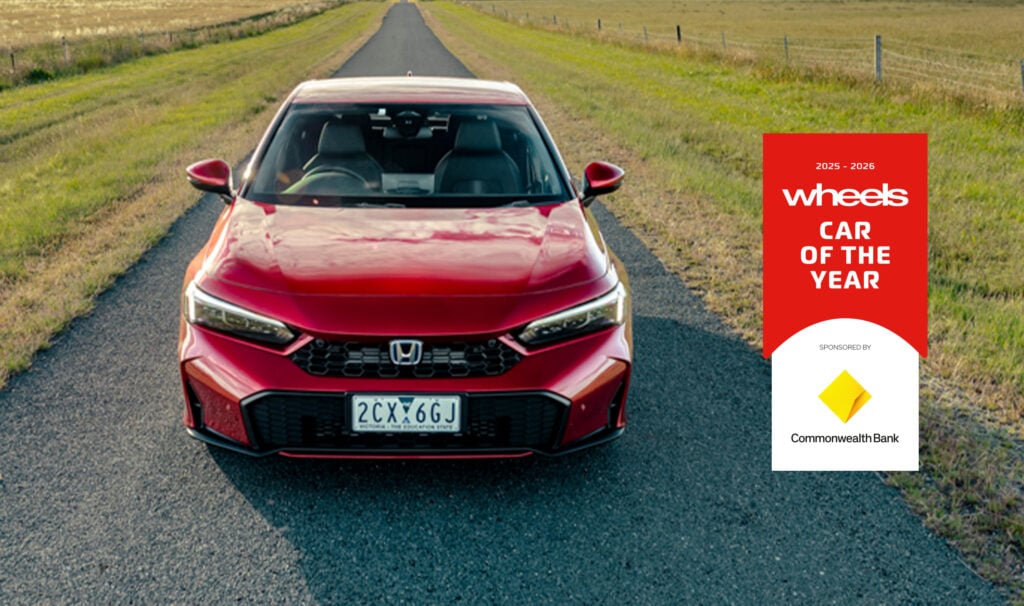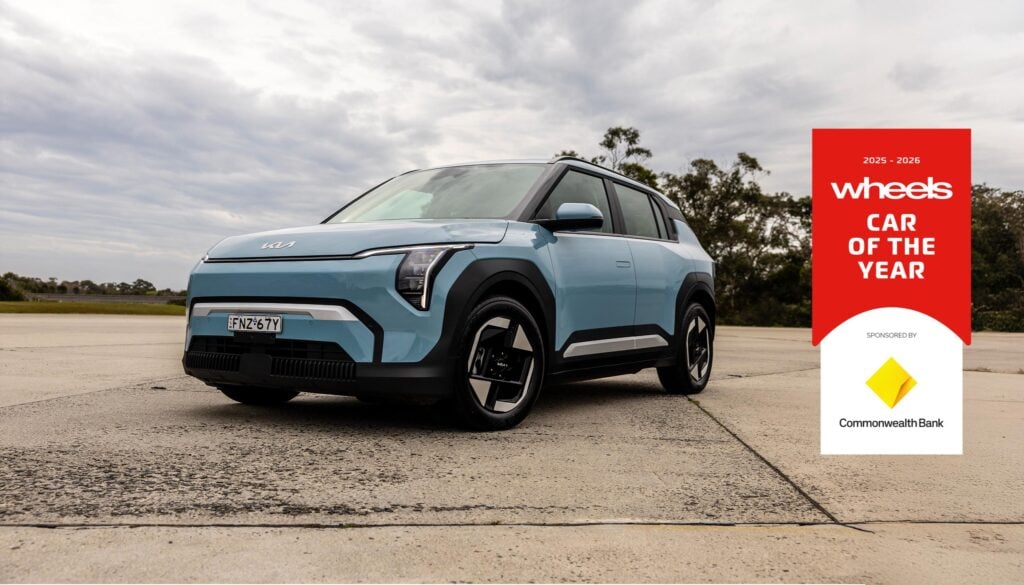There’s a place in the world for cars like the Smart, but its natural environment is more Europe’s clogged cities than suburban Australia.
The bigger – plus 195mm for a still-tiny 2695mm in overall length – second-generation Smart ForTwo is undoubtedly hugely improved in many key areas. Yet in terms of Dynamics and Value it’s still so obviously compromised that, despite the clever rear-engine packaging, the world’s smallest production car never looked like proceeding beyond the first cull.
Under the intense COTY spotlight, the Smart failed to make a strong impression against the criteria. The positives – a terrifically willing and smooth little engine, excellent passive safety and still-cute if hard-to-spot-the-changes styling – were quickly outweighed by negatives.We drove two Smart variants: coupe and convertible, both powered by the 62kW turbocharged engine variant (chosen by 30 percent of local customers, and yes, we did ask for a normally aspirated version), one with the standard manual steering, the other the optional ($450) power steering. On the varied exercises at You Yangs the judges immediately found the manual steering wanting.For the demands of city driving, the steering was criticised for being too slow, as well as too heavy at parking speed, surprising on a car that carries just 44 percent of its 825kg over the front wheels. On the handling course, the steering loads built up excessively as understeer abruptly increased on turn-in. “Awful steering,” carped Stahl. “It tramlines, wanders and is bad in crosswinds.” The electric power steering is quicker, far lighter and really should come as standard, but there is still the impression the driver is constantly chasing the front end because the chassis never settles.The bigger, now Mitsubishi-supplied, one-litre engine (it was just 698cc on the first version) produces enough power to drop one ratio (down to five forward gears) from the automated gearbox. Despite the shifts being noticeably quicker, there is still an obvious delay. Carey asked: “Why isn’t there a manual gearbox with a clutch pedal?” Performance was judged “zippy” in city driving, but the long travel and grabby brakes conspire against smooth progress in stop-start driving. In the transmission’s optional automatic mode ($750) the sluggish changes are further exaggerated.Nor did the Smart’s dynamics endear themselves: the too-stiff suspension directly impacts on the ride, which can be harsh over potholes and corrugations, yet pitches the car longitudinally during gearchanges, and is prone to bouncing. Yet this firmness of ride doesn’t prevent the ForTwo from feeling top-heavy. Fun it is not.Stability control is standard and fundamental to the safety package, but the system isn’t tuned for Australian conditions, tending to intercede rather erratically. On gravel roads, which few Smarts will encounter, it’s pretty obvious that the engineers have ignored any serious testing on such surfaces, but the problems of the aggressive intervention also arose on wet roads and through our lane-change test. Some judges began to question its stability.“Schizophrenic,” said Poppitt of the Smart’s ESP.Questions were also raised about the ForTwo’s value, given its base $20K price, the relatively low level of standard equipment and the high cost of the many options.As much as we’d love to love the ForTwo, in the end we agreed that you can buy far more rounded small cars, which carry four adults, for less money. To make any impact in Australia, the ForTwo needs greatly improved suspension compliance, stronger performance and a decent gearchange. No judge questioned why the Smart fell at the first hurdle.





